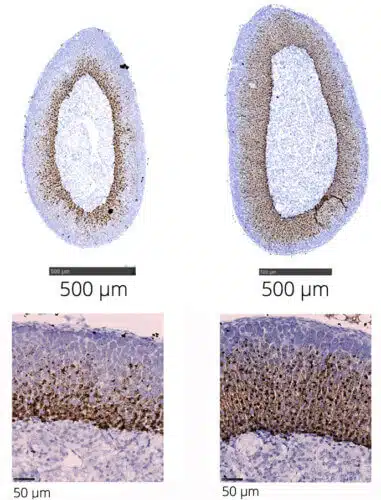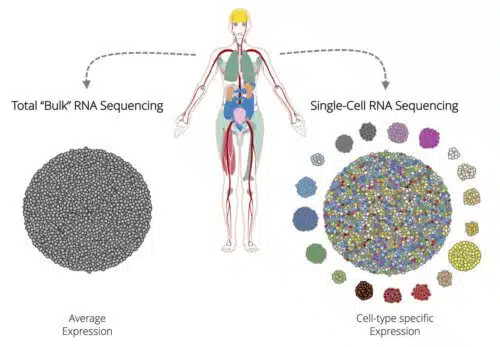From the brain to the adrenal glands - scientists from the Weizmann Institute of Science and the Max Planck Institute have mapped the entire "stress axis" and shown how chronic stress affects and changes these tissues at the individual cell level. The scientists discovered a new subpopulation of endocrine cells involved in regulating the response to chronic stress
When we are under pressure - the whole body is under pressure. Some will feel the tension in the stomach folds, while others will experience stiffness in the neck or jaw area, but only one organ in the body will grow, and even double its volume, as a result of constant exposure to stress - the adrenal gland that secretes the stress hormone cortisol. It has been known for more than a century that these glands are the last stop of the "stress axis" which begins with "stressful" messages sent from the brain to the bloodstream. Recently, Weizmann Institute of Science scientists and their research partners revealed, in unprecedented detail, the extent of the changes that occur in this area - and in the other tissues of the stress axis - and even identified a new subpopulation of cells involved in the response to chronic stress. The research findings published today in the scientific journal Science Advances may pave new ways to treat diseases resulting from chronic stress such as anxiety, depression, obesity and diabetes.
As we add ingredients to a fruit shake, we may get a drink that is more surprising in its flavors, but it will be difficult to put our finger on the contribution of each ingredient to the final result. A fruit salad, on the other hand, allows you to combine flavors and textures without masking the unique contribution of each and every fruit. Similarly, when checking the average gene expression in a certain tissue, it is not possible to distinguish the differences between different cells in the same tissue. Technological developments of recent years allow scientists to measure gene expression in a tissue at the level of the single cell, thus characterizing with unprecedented resolution differences between cells in the same tissue. in the laboratory of Prof. Alon Chen - a joint research laboratory for the Weizmann Institute of Science and the Max Planck Institute - took it upon themselves to prepare a particularly complex fruit salad: the post-doctoral researcher, Dr. Juan Pablo-López, for the first time mapped the "stress axis" along its entire length at the single cell level - both in normal mice and in mice exposed to chronic stress.

In total, Dr. Pablo-López mapped 21,723 cells along the stress axis - starting with the paraventricular nucleus (PVN) in the hypothalamus, going through the pituitary gland and ending with the adrenal gland. When the researchers compared the stress map in normal mice and "stressed" mice, they discovered many molecular changes in the tissues examined: 66 genes that reacted differently in the hypothalamus, 692 in the pituitary gland - and 922 in the adrenal gland, where the most significant changes were also observed in the composition of the cell populations in embroidery
Thanks to the pressure axis mapping, the scientists identified for the first time a subpopulation of endocrine cells in a specific area of the adrenal cortex. In a state of chronic stress, these cells were overrepresented and even larger - both reasons for the well-known swelling of the adrenal glands. The researchers also detected an overexpression of the gene Abcb1 In these cells - a gene that encodes an important protein in the cell membrane that serves as a pump to remove substances from the cell. The overexpression of the gene is apparently intended to respond in situations of chronic stress. "Excess production of the stress hormone requires a mechanism for its rapid release," explains Dr. Pablo-López.
To check whether the findings in mice are also valid in humans, the researchers, in collaboration with university hospitals in the UK, Germany, Switzerland and the United States, examined tissues of the adrenal glands removed from people suffering from Cushing's disease - a unique clinical condition in which the stress axis is in a state of activation Constant as a result of a tumor in the pituitary gland. These patients suffer from many symptoms related to chronic stress - obesity, diabetes, hypertension as well as a tendency to depression and irritability - and sometimes have to have their adrenal glands removed. Examining the tissues removed from these patients complemented the picture obtained in mice.
""Much of the research in the field has so far focused on how chronic stress affects the brain - we knew much less about how the peripheral components of the axis are affected at the molecular level"

In addition, the findings were also strengthened in depressed patients. Previous studies have shown that the gene Abcb1 may take different forms in humans - a phenomenon known as polymorphism of genes; These different forms may affect people's susceptibility to diseases or different treatments. One form of the gene has previously been linked to depression. Analysis of blood samples from depressed patients with this version of the gene - before and after artificial activation of the stress axis - shocked the findings in mice and showed that the change in the gene affects the ability of their adrenal glands to deal with stress signals.
Mental disorders, obesity and damage to the immune system - chronic stress may affect the body in different and diverse ways. Of course, these changes and their intensity also depend on the history and personal genetics of each of us. Mapping the stress axis at the individual cell level illustrates the extent of the changes that may occur in these tissues as a result of exposure to stress. "Much of the research in the field has so far focused on how chronic stress affects the brain - we knew much less about how the peripheral components of the axis are affected at the molecular level," says Prof. Alon Chen. "The new findings mark new possible targets for the treatment of diseases resulting from chronic stress - and open new directions for further research."
